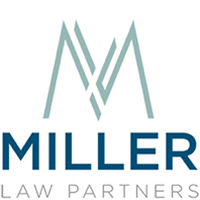Additional Guidance
The U.S. Department of Labor has provided additional guidance for employers in its Families First Coronavirus Response Act (“FFCRA”) Questions and Answers.
The guidance seeks to clarify many questions for employers with respect to complying with the FFCRA and its provisions for expanded FMLA rights and Emergency Paid Sick Leave.
Key Takeaways for Employers
1. Paid sick leave and expanded family and medical leave benefits are not retroactive.
2. Taking advantage of the FFCRA Small Business Exemption:
In the coming days, the Department of Labor will promulgate regulations providing detailed criteria directing employers how to take advantage of the Small Business Exemption.
In general, documentation as to why a business with fewer than 50 employees meets eligibility criteria will be required. Notably, employers are directed at this time not to send any materials to the Department of Labor when seeking a Small Business Exemption for paid sick leave and expanded family and medical leave.
3. Paid sick leave – documentation required:
An employee must provide his or her employer with appropriate documentation in support of the reason for the leave, including:
- the employee’s name,
- the qualifying reason for requesting leave,
- a statement that the employee is unable to work, including telework, for that reason, and
- the date(s) for which leave is requested.
Documentation of the reason for the leave will also be necessary, such as the source of any quarantine or isolation order, or the name of the health care provider who has advised the employee to self-quarantine.
Such records should be retained by employers intending to claim a tax credit under the FFCRA as substantiation for payment of the sick leave wages in accordance with IRS instructions and procedures.
4. Expanded family and medical leave – documentation required:
An employee who takes expanded family and medical leave to care for his or her child whose school or place of care is closed, or child care provider is unavailable, due to COVID-19, must provide appropriate documentation in support of such leave.
This requirement also applies when the first two weeks of unpaid leave run concurrently with paid sick leave taken for the same reason.
Such records should be retained by employers intending to claim a tax credit under the FFCRA as substantiation for the expanded family and medical leave in accordance with IRS instructions and procedures.
5. Intermittent paid sick leave or expanded family and medical leave while teleworking is permitted:
An employee and employer may agree for the employee to take paid sick leave and/or expanded family and medical leave intermittently while teleworking.
Intermittent leave may be taken in any increment, provided that the employee and employer agree.
- For example, if the employee and employer agree on a 90-minute increment, the employee could telework from 1:00 PM to 2:30 PM, take leave from 2:30 PM to 4:00 PM, and then return to teleworking.
The Department encourages employers and employees to collaborate to achieve flexibility and meet mutual needs, and the Department is supportive of such voluntary arrangements that combine telework and intermittent leave.
6. Intermittent paid sick leave while working at the usual worksite may be permitted:
If an employee is not teleworking, paid sick leave for qualifying reasons related to COVID-19 must be taken in full-day increments.
It cannot be taken intermittently if the leave is being taken because the employee:
- Is subject to a Federal, State, or local quarantine or isolation order related to COVID-19;
- Has been advised by a health care provider to self-quarantine due to concerns related to COVID-19;
- Is experiencing symptoms of COVID-19 and seeking a medical diagnosis;
- Is caring for an individual who either is subject to a quarantine or isolation order related to COVID-19 or has been advised by a health care provider to self-quarantine due to concerns related to COVID-19; or
- Is experiencing any other substantially similar condition specified by the Secretary of Health and Human Services.
This is because the intent of the FFCRA is to keep employees who are sick or possibly sick with COVID-19, or caring for an individual who is sick or possibly sick with COVID-19, from spreading the virus to others.
Once an employee no longer has a qualifying reason for taking paid sick leave before exhausting the paid sick leave, the employee may take any remaining paid sick leave at a later time, until December 31, 2020, if another qualifying reason occurs.
If an employee is taking paid sick leave to care for his or her child whose school or place of care is closed, or whose child care provider is unavailable, because of COVID-19 related reasons, intermittent leave is permitted.
- For example, if an employee’s child is at home because his or her school or place of care is closed, or the child care provider is unavailable, because of COVID-19 related reasons, the employee may take paid sick leave on Mondays, Wednesdays, and Fridays to care for his or her child, but work at his or her normal worksite on Tuesdays and Thursdays.
The Department encourages employers and employees to collaborate to achieve maximum flexibility. Therefore, if employers and employees agree to intermittent leave on less than a full work day for employees taking paid sick leave to care for their child whose school or place of care is closed, or child care provider is unavailable, because of COVID-19-related reasons, the Department is supportive of such voluntary arrangements.
7. Intermittent expanded family and medical leave while working at the usual worksite may be permitted:
Intermittent expanded family and medical leave is permitted only when the employee and employer agree upon such a schedule.
- For example, if the employee and employer agree, an employee may take expanded family and medical leave on Mondays, Wednesdays, and Fridays, but work Tuesdays and Thursdays, while his or her child is at home because the child’s school or place of care is closed, or child care provider is unavailable, due to COVID-19 related reasons, for the duration of the leave.
The Department encourages employers and employees to collaborate to achieve flexibility. Therefore, if employers and employees agree to intermittent leave on a day-by-day basis, the Department supports such voluntary arrangements.
8. If an employer closes a worksite before April 1, 2020, employees are not eligible for paid sick leave or expanded family and medical leave under the FFCRA, but may be eligible for unemployment insurance benefits.
9. If an employer closes a worksite on or after April 1, 2020, but before the employee goes out on leave, the employee is not eligible for paid sick leave or expanded family and medical leave under the FFCRA, but may be eligible for unemployment insurance benefits.
10. If an employer closes a worksite while an employee is on paid sick leave or expanded family and medical leave, the employee is no longer entitled to paid sick leave or expanded family and medical leave, and is only entitled to paid sick leave or expanded family and medical leave used before the employer closed. The employee may be eligible for unemployment insurance benefits.
11. If an employer is open, but furloughs an employee on or after April 1, 2020, the employee is not entitled to take paid sick leave or expanded family and medical leave due to the furlough, but may be eligible for unemployment insurance benefits.
12. If an employer closes a worksite on or after April 1, 2020, but advises its employees that it will reopen at some time in the future, the employee is not entitled to take paid sick leave or expanded family and medical leave due to the worksite closure, but may be eligible for unemployment insurance benefits.
13. If an employee’s scheduled work hours are reduced, the employee is not entitled to take paid sick leave or expanded family and medical leave due to the reduced work schedule, but may be eligible for unemployment insurance benefits.
14. An employee may use preexisting employer-sponsored leave entitlements to supplement FFCRA paid sick leave or expanded family and medical leave benefits, but not concurrently for the same hours, and only if the employer agrees.
- For example, if an employee receives 2/3 of his or her normal earnings from paid sick leave or expanded family and medical leave under the FFCRA and his or her employer permits, he or she may use preexisting employer-provided paid leave to get the additional 1/3 of his or her normal earnings so that the full normal earnings is received for each hour.
As official guidance develops, we will continue to keep you informed.

